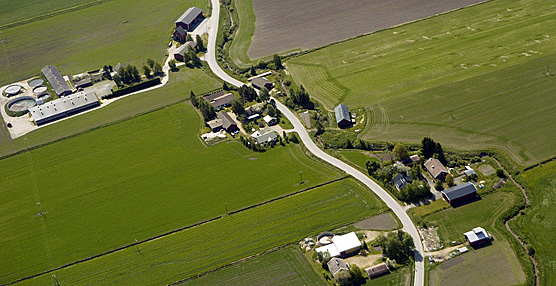Press release 2022-02-16 at 12:12

© Kai Widell
News from SYKE and Luke
A reform of environmental regulation of agriculture is currently under way. Maximum levels are being set for phosphorus-based fertilisers, and they will be applicable to all farms. Enforcement of the restrictions needs to be made easier than it is now. According to a new report, the best way to succeed at this would be to introduce a digital data system that would compile data on nutrients, cultivation, and crop yields from all field parcels in Finland. Establishing such a nutrient data resource would require new legislation.
Solving the problem of agricultural eutrophication requires efficient environmental regulation of agriculture. This regulation is currently being updated. Existing restrictions on the use of nitrogen fertilizer will be supplemented by regulations on maximum levels of of phosphorus application that will apply to all farmers.
To support fertiliser regulation, the new report proposes the establishment of a digital nutrient data resource that would be available to officials and researchers. The report is a cooperative effort of the Finnish Environment Institute (SYKE) and the Natural Resources Institute Finland (Luke).
“Farmers certainly know the nutrient status of their own fields, but information from farms is not being passed on for use by administrative bodies or researchers. This means that restrictions on fertilizers and other environmental policy matters ends up being planned and implemented based on inadequate information”, notes Luke researcher Kauko Koikkalainen.
The digital nutrient data resource would bring information on nutrients, cultivation, and weather from all field parcels in Finland. The data resource would be maintained by the Finnish Food Authority.
“Setting up the data resource would require greater reliability in the taking of soil samples for fertility analysis. The existing administrative registers also need to be developed. For example, the Plant Registry should be standardised, and a real-time fertiliser register should be established”, Koikkalainen adds.
The data resource would help in the planning of environmental policy and the development of agricultural water protection measures as cost-effectively as possible.
On some farms setting up a nutrient data resource would require further action
The initiation of an agricultural nutrient data resource would require further action on farms that are not yet recording notes on individual field parcels as extensively as existing environmental compensation would require. Further measures would also be in store for farms where field parcel notes are not yet recorded digitally. On the other hand, the need for separate surveys and reports that farms need to complete would decrease.
“Interviews with farmers show that there is a diversity of attitudes, both negative and positive, toward collecting and using parcel-specific nutrient information. Some of the farmers that were interviewed suspected that not all farmers comply with the limits placed on fertiliser use. In such cases the nutrient data resource can be seen as an opportunity to ensure that the same rules apply to everyone”, explains Helena Valve, Senior Research Scientist at SYKE.
Establishing a nutrient data resource requires new legislation
Establishing a nutrient data resource would require new legislation. All farmers would be required to maintain, and to report to officials about the field parcel records that they keep at a level equivalent to the present environmental compensation system in a way that makes it possible to monitor maximum levels of fertilisation.
Although the nutrient data resource would be primarily intended for use by officials, the information that it contains would mainly be public environmental data with no basis for restrictions on availability. However, sharing the information would require either a separate amendment to the Act on the Openness of Government Activities, or inclusion of the regulations on environmental information in the nutrient information reserve in special legislation on the limiting of nutrient loading.
The report is part of the Shared Waters project run by the Finnish Environment institute. The aim of the project is to develop concrete recommendations to improve the knowledge base and methods of water protection. Funding for the project is provided by the Finnish Cultural Foundation and it includes researchers from the Finnish Environment Institute, the Natural Resources Institute Finland, the University of Helsinki, and the Pyhäjärvi Institute.
Further information
Researcher Kauko Koikkalainen, Natural Resources Institute (Luke)
tel. +358 29 532 6257, firstname.lastname@luke.fi
Senior Research Scientist Helena Valve (farmer interviews), Finnish Environment Institute (SYKE)
tel. +358 295 251 723, firstname.lastname@syke.fi
Doctor of Laws Jussi Kauppila (legal analysis):
tel. +358 40 5400 665, firstname.lastname@gov.fi
Senior Research Scientist Petri Ekholm, head of the Shared Waters project, Finnish Environment institute (SYKE)
tel +358 295 251 102, firstname.lastname@syke.fi
Link to the report
Reports of the Finnish Environment Institute 4/2022
Agricultural nutrient data resource – a tool for officials and farmers (helda.fi) (In Finnish with English abstract)
Link to the pages of the Shared Waters project
Shared waters